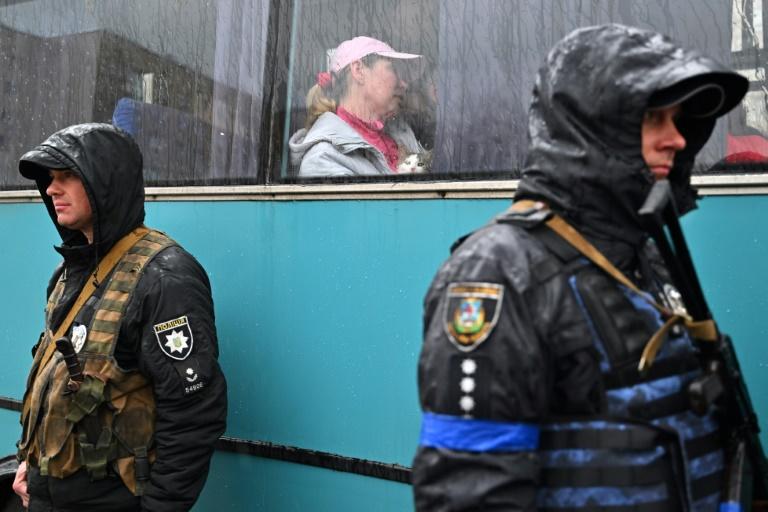
More than four million Ukrainians have fled the country within five weeks to escape Russia’s “senseless war”, the United Nations said Wednesday.
The speed and scale of the exodus is unprecedented in Europe since World War II, and has seen a wave of empathy extended to the women, children and elderly men who have made it across the border.
UNHCR, the UN refugee agency, said 4,019,287 Ukrainians had fled across the country’s borders since the February 24 invasion, with more than 2.3 million going west into Poland.
The flow has already surpassed UNHCR’s initial estimate that the war could eventually create up to four million refugees.
“Refugees from Ukraine are now four million, five weeks after the start of the Russian attack,” UNHCR chief Filippo Grandi said on Twitter.
“I have just arrived in Ukraine. In Lviv I will discuss with the authorities, the UN and other partners ways to increase our support to people affected and displaced by this senseless war.”
Women and children account for 90 percent of those who have fled. Ukrainian men aged 18 to 60 are eligible for military call-up and cannot leave.
The initial daily flow of refugees heading west has slowed over the last week and remained steady at around 40,000.
– Welcoming hand –
In total, more than a quarter of the population living in government-controlled areas before the invasion have been forced to flee their homes, with an estimated 6.5 million uprooted people still within the country’s borders.
Besides the Ukrainians who have fled, another 200,000 non-Ukrainians who were living, working or studying in the country have managed to escape.
But the bare figures, however stark, do not reflect the trauma of having to flee with a few hastily-packed possessions and head for an unknown future, whether by car, in a packed train or on foot.
Nor do the numbers reflect the warm hand of welcome and outpouring of solidarity shown by Europeans, whether governments or charities and individual volunteers.
Nearly six in 10 Ukrainian refugees have headed west to Poland, the biggest of four EU countries bordering Ukraine. The country already had a well-established Ukrainian community of 1.5 milion people, largely migrant workers.
It has been exceptionally generous in welcoming its neighbours and has been a country from which refugees feel they could return easily.
From the start of the invasion to Tuesday, 364,000 people crossed in the opposite direction from Poland into Ukraine. They are typically Ukrainians working in Poland who have returned to take care of their families, or to find them and take them to the border.
But there have also been refugees who have decided to go back out of homesickness, or to protect their homes.
– Sharing the burden –
Mindful of the strain on Poland, the European Union wants to share the burden more effectively across the bloc.
Ylva Johansson, the European commissioner for home affairs, said Monday that the EU had to encourage war refugees in Poland to keep moving west.
It is “important to incentivise refugees to leave Poland and actually try to go also to other member states, because otherwise the situation would not be sustainable”, she said.
On March 4, the EU activated a never-used directive giving temporary protection to Ukrainians, allowing them to live, work, study and have access to welfare in any of the bloc’s 27 member states.
Some 800,000 people have applied for the status, while Ukrainians can stay three months without a visa in Europe’s Schengen open-borders zone.
Besides Poland, more than 600,000 Ukrainian refugees have reached Romania — many via Moldova — nearly 365,000 crossed into Hungary, and 280,000 into Slovakia.
Russia itself is now hosting 350,000 Ukrainian refugees, while Belarus has taken in more than 10,000.
The European mass mobilisation of support for Ukrainian refugees contrasts sharply with the reception often afforded refugees from other continents, such as those from Afghanistan or Syria.
rjm-vog/bp




